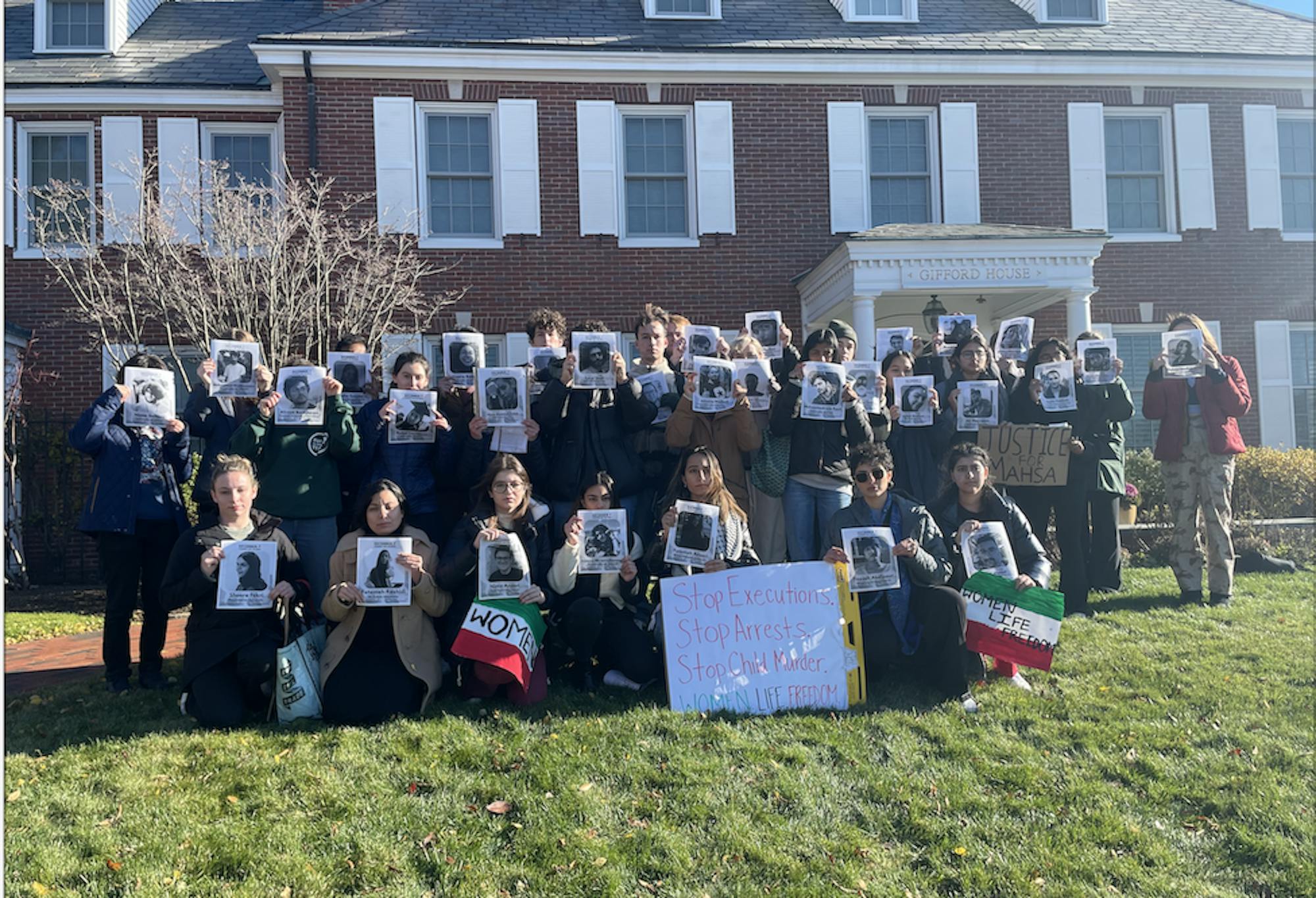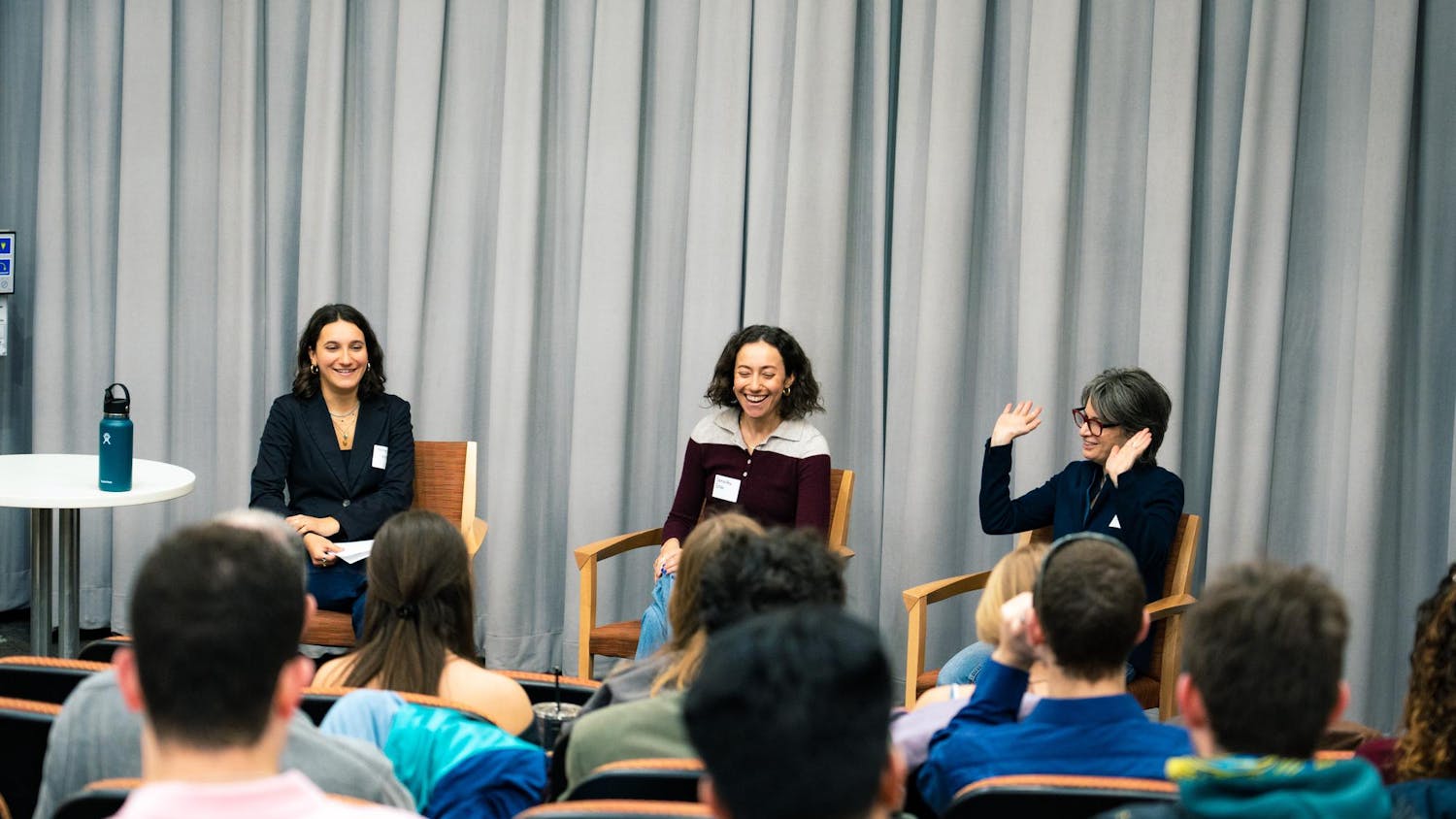Tufts Persian Students Association hosted professor Neda Moridpour on March 15 to kick off the club’s new lecture series, entitled “Iran’s Political History: Resistance and Revolution.” The series was organized in light of the murder of Jina ‘Mahsa’ Amini, who was arrested and killed by the Iranian morality police for allegedly not wearing the hijab in accordance with government standards.
Saya Ameli Hajebi, vice president of PSA, explained the goal behind the series in a written statement to the Daily.
“[PSA hopes] to be able to raise awareness around the women-led revolution in Iran and educate the Tufts Community,” Hajebi wrote. “Tufts has historically suffered from a lack of representation and awareness around issues affecting middle eastern students. Our lecture series has both opened a direct channel of communication with the administration and also begun a series of educational events that will hopefully continue in future semesters as well.”
PSA began their lecture series after their campaign asking University President Anthony Monaco to make a public statement of solidarity with the women in Iran. After garnering signatures from hundreds of community members and holding a university-wide protest, PSA began to plan their lecture series with support and funding from the Provost’s Office. The club is currently organizing more events with other Iranian experts and activists.
Moridpour is a Kurdish-Iranian artist who teaches at the SMFA.Her work examines dislocation, violence and gender and racial inequality. Moridpour also has strong foundations in advocacy work and is the co-founder of two artist-activists collaboratives known as LOUDER THAN WORDS and the P[Art] Collaborative. Moridpour has actively supported PSA throughout this school year with events including the Resistance Fashion Show hosted by the South Asian Political Action Community.
Moridpour began the lecture by recognizing Kurdish revolutionary forces that have been active in the past decade, highlighting the influence of these movements on the current protests in Iran. Moridpour noted that the primary slogan of the contemporary protests, “Jin, Jiyan, Azidi,” which translates to “Woman, Life, Freedom,” can be traced to the Kurdish freedom movement of the late 20th century.
“The Kurdish revolutionary forces that seized control of the [Rojava] region set out to construct a new society in accordance with the ideals of a new paradigm, and thus initiated an ongoing process of fundamental transformation [of] social relations,” Moridpour said.
Moridpour continued by acknowledging Amini’s Kurdish ethnicity and the ways that the current protests mark a decided shift from the past in terms of interethnic relations.
“In the end, the choice to select the slogan for this revolution is something new that differentiates this intersectional feminist revolution from other protests, … because it has successfully been able to centralize … the voices of those who have been marginalized,” she said.
Moridpour defined the various symbols and performances associated with the protests as key hallmarks of resistance. As an artist, Moridpour seeks to examine the way that culture and changing identities influence the presentation of revolution. She argued that there exists an intrinsic relationship between revolutionary cultural shifts and symbolic acts, including photographs of schoolgirls exposing their hair and the covering of security cameras with sanitary pads.
Moridpour is the founder of @womanlifefreedom.art, an Instagram account that has amassed over 80,000 followers and spotlights artwork related to the ongoing Iranian protests. Moridpour shared the account during her lecture and reflected on the ways that archival work pairs with the transformation of cultural symbols.
“When we look around us … we recognize that things do not in fact disappear,” Moridpour said. “They exist in a constant state of transformation and … might alter how we think of things as objects, as art, as culture.”






